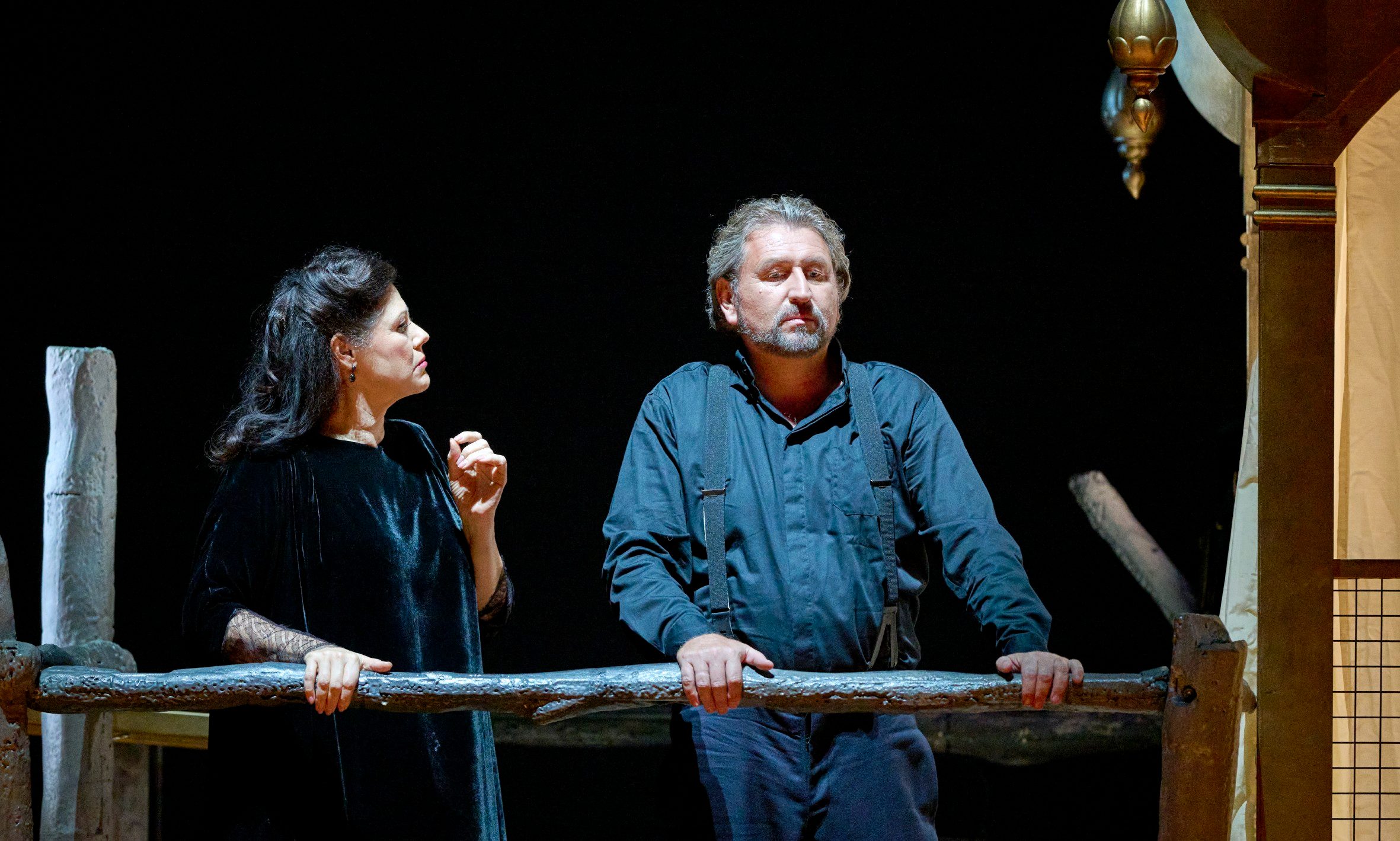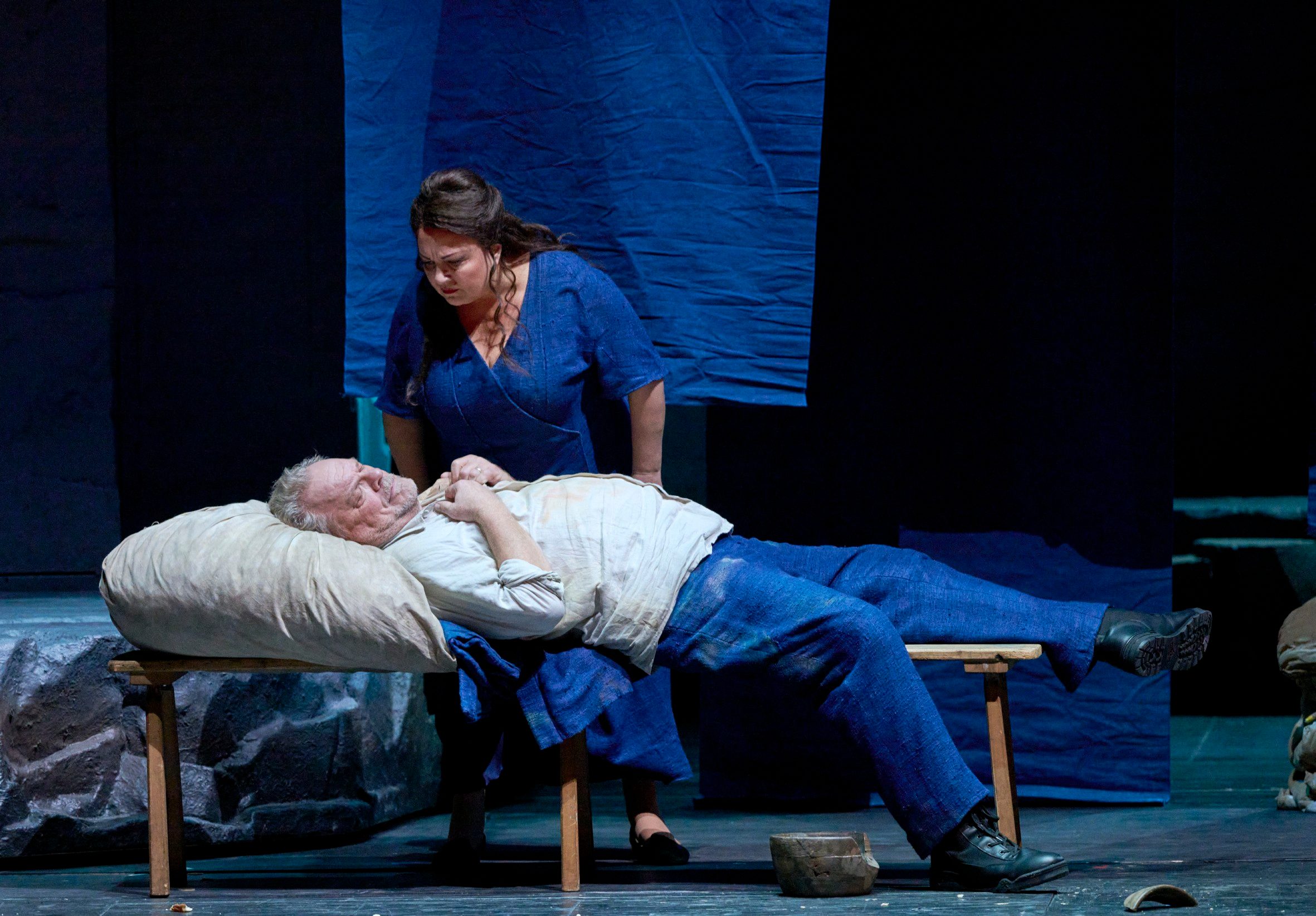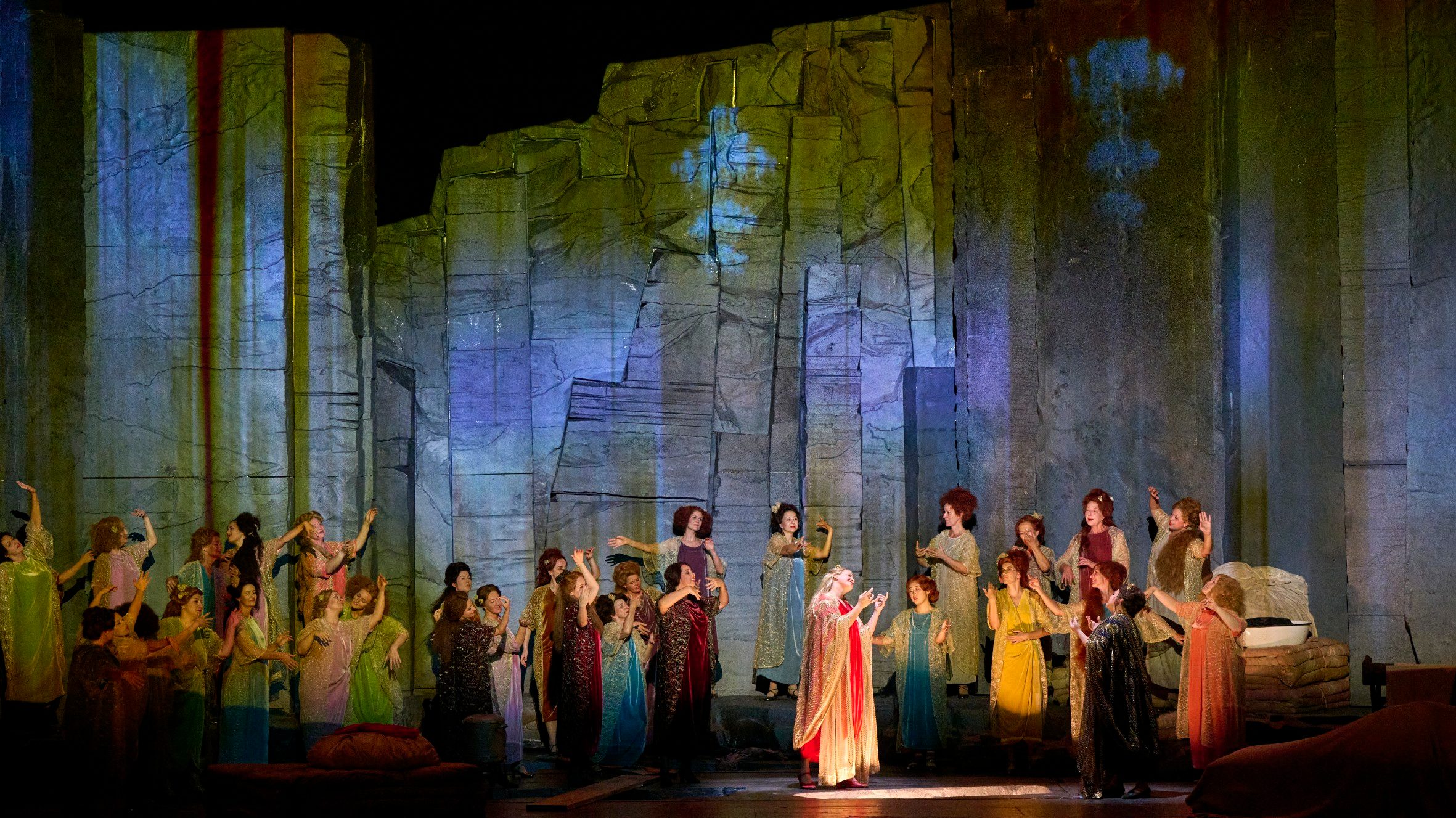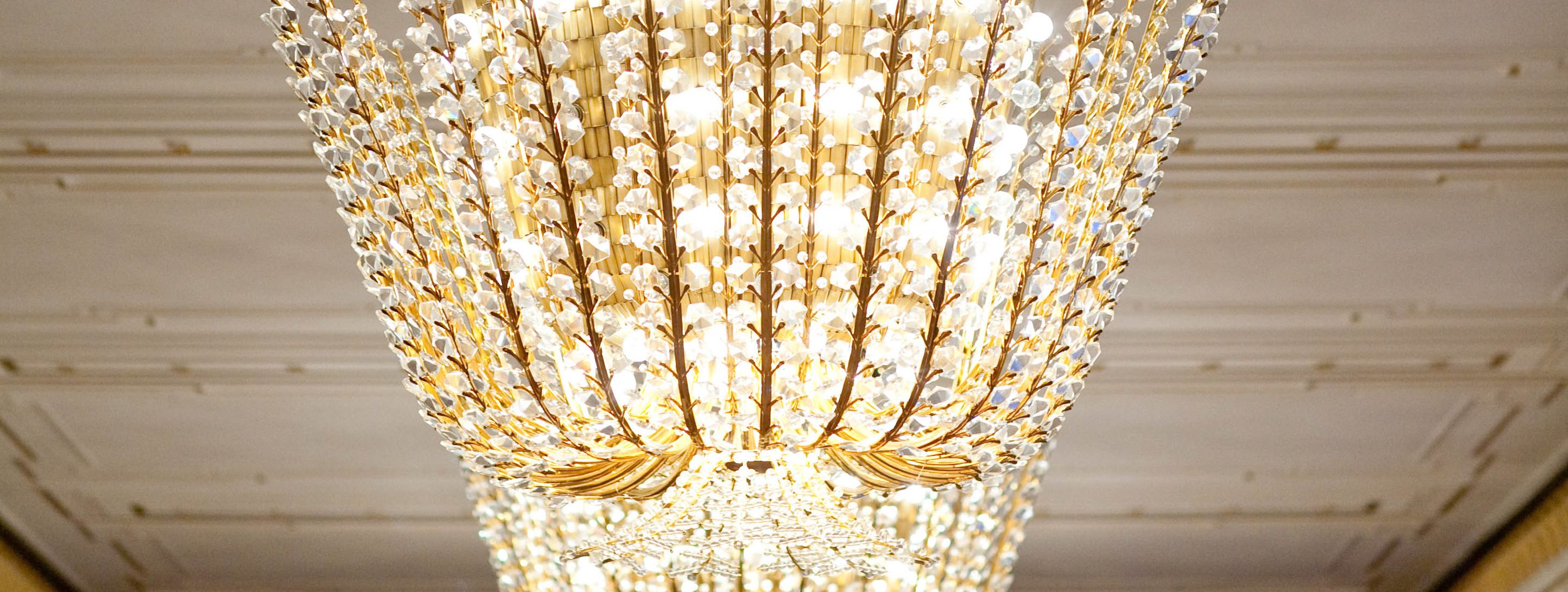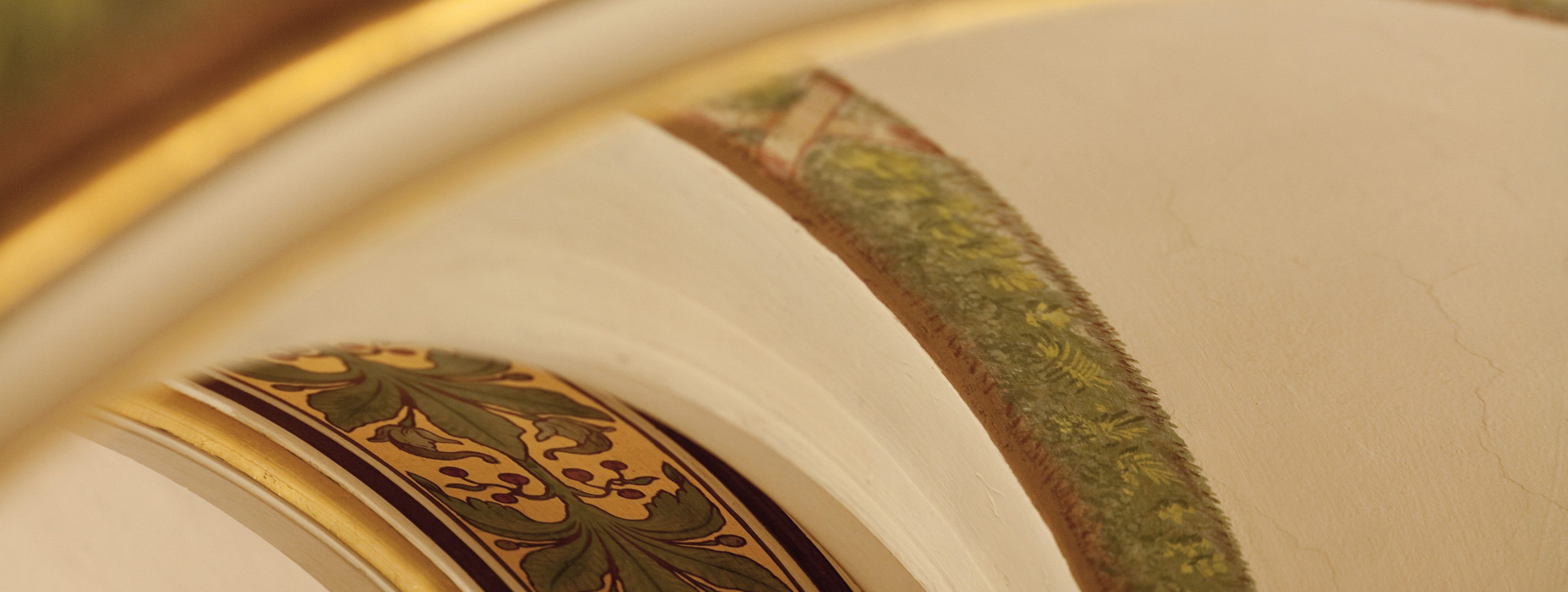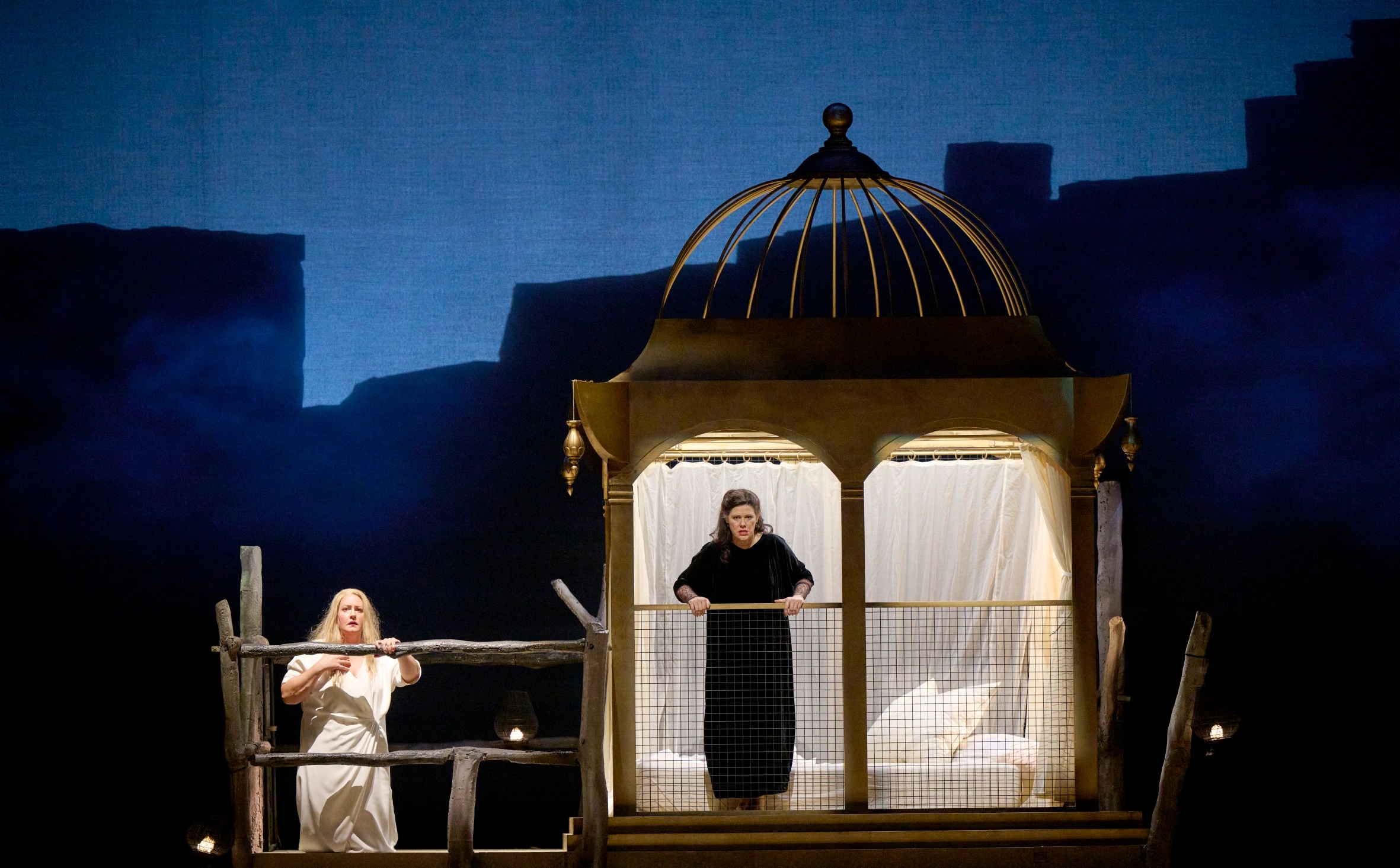
Short Summary
In the fairy-tale opera »Die Frau ohne Schatten«, Richard Strauss and Hugo von Hofmannsthal pose the simple yet difficult question of how to live a meaningful life:
Should the focus be on one's own personal happiness or on empathizing with others? To find the answer, the authors send their stage characters through trials. The image of the shadow stands for humanity. The happy ending is a rousing final cheer: »Now I will rejoice as no one has rejoiced!«
Die Frau
ohne Schatten
Storyline
The emperor, unaware of the impending danger, sets off on another hunt. The empress secretly goes to the human world with her nurse to gain a shadow. They return to the house of the dyer Barak and his wife: poverty reigns there, the couple live together with Barak's brothers and have no children.
The dyer, dissatisfied with her life and her husband, allows herself to be seduced by the promise of wealth and is prepared to give her shadow to the empress: but then the dyer could never become a mother. At first she desires a handsome young man conjured up by the nurse, but her conscience prevents her from actually cheating on Barak, who loves her more than anything. Distraught, she confesses to him what has happened. For Barak, whose only goal is the happiness of a large, close-knit family, a world collapses: A lust for murder rises up in him. At this moment, their world sinks and they both find themselves separated in a stone vault: remorse seizes the couple and they realize their love for each other anew.

The emperor, in turn, believes he has been betrayed by the empress and wants her dead: but even in his anger he is unable to kill his wife. The Empress realizes that her happiness can only be achieved through the misfortune of others - Barak and his wife. She decides against her own welfare and does not drink the magically powerful water of life, which secures her the dyer's shadow and thus saves the emperor from petrification. She has thus passed the test of being human, as she now shows empathy and compassion for others and puts her personal happiness behind that of others. By attaining humanity, she gains a shadow - and the Emperor, whom she loves, is saved, as is the dyer couple. The voices of the (as yet) unborn children echo softly after the triumphant final jubilation:
The composer raved about the libretto while they were still working together: "Incredibly noble, magnificent, mature and interesting, with splendid dramatic and moral problems, wonderful scenic processes." Musically and dramaturgically, Strauss took up ideas from Richard Wagner and developed them further in his own spirit. Mozart's Magic Flute, on the other hand, was the inspiration for the fairytale-like atmosphere and the trials imposed on the heroes.
Not too many important masterpieces have been premiered at the Haus am Ring. However, Richard Strauss and Hugo von Hofmannsthal's fourth opera together, Die Frau ohne Schatten, is one of the few exceptions in this respect: On October 10, 1919, the work, which Strauss regarded as "the last romantic opera", saw the light of day at the Vienna State Opera and has been a fixture in international repertoires ever since.


